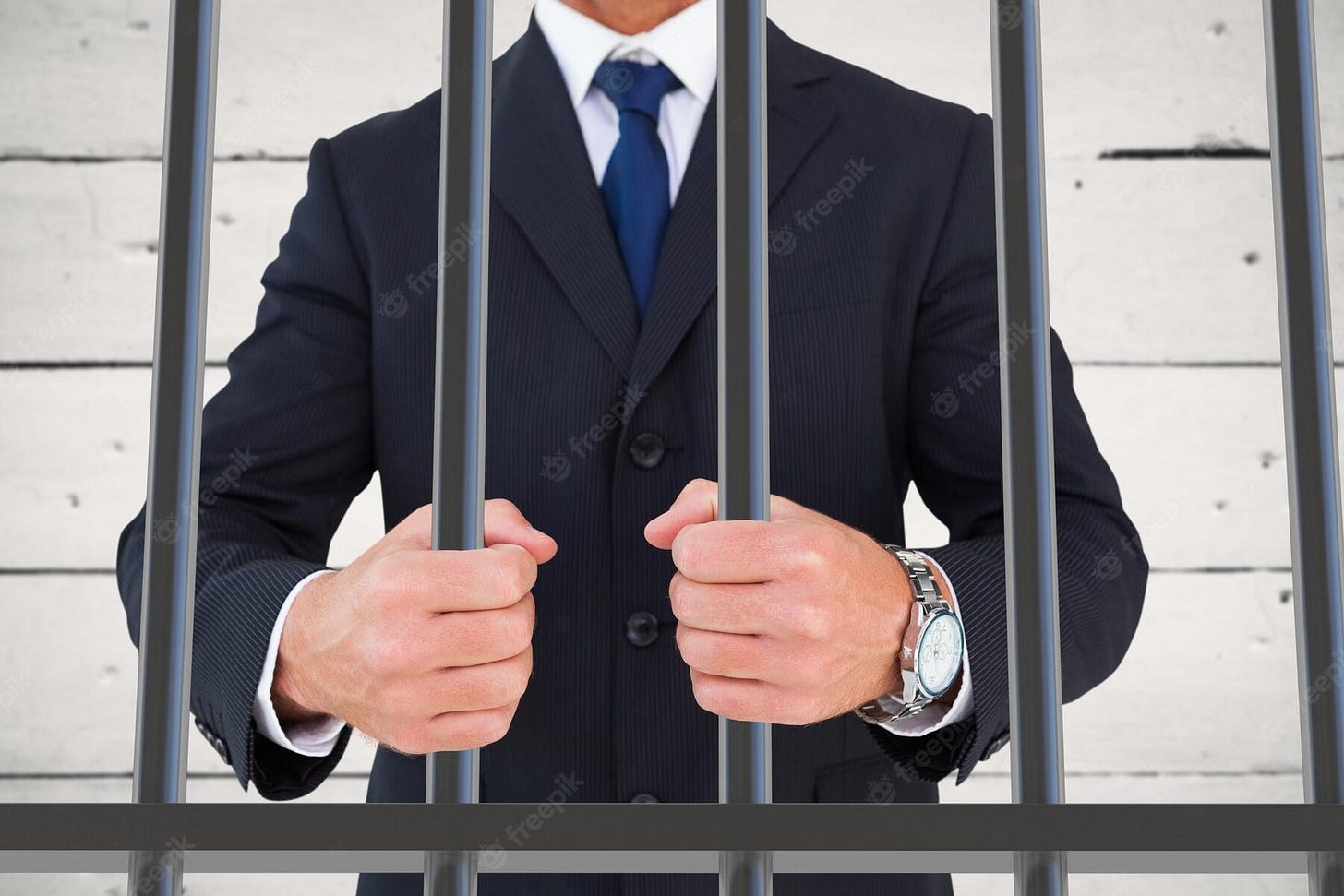“The Biden administration is prioritizing the investigation and prosecution of corporate crime and is giving DOJ prosecutors broader power to do so.” The National Law Review, November, 2021
Unless it’s a major Ponzi scheme, we don’t hear too much about what has been dubbed “white collar crime”. And that’s a shame, because it costs its direct victims and the American taxpayers between $300 and $800 billion a year according to FBI estimates. On the other hand, “street crime”, anything from petty theft to crimes that involve violence and/or loss of life we hear about daily, especially with today’s ever-present, random gun violence. However, it is estimated that the annual cost of street crime (not counting the tragic loss of life) is a paltry $16 billion by comparison.1
White collar crime is just as tragic in its own way. Monetary crimes like embezzlement, various types of fraud, cheating on taxes and money laundering are just a few of the crimes the FBI classifies as white collar criminal activity. This type of crime is generally defined as non-violent and committed for financial gain. But it can cripple individuals, their families and broader communities with its reach. What’s not tragic, even violent, about loosing your home to foreclosure when mortgage modifications were available, but routinely denied?
According to a Business Insider article published in 2022, “These types of crimes are often committed with elaborate, sophisticated plans that are designed to avoid detection”. And the perpetrators are typically white males with college degrees, married and between the ages of 30-45.
These crimes are usually investigated and prosecuted on a federal level, since most white-collar crime operations cross state lines, thus the waxing and waning of prosecutions by different presidential administrations.
Here’s a graph that shows the rates of white collar criminal prosecutions from 2002 - 2022, produced by the Transactional Records Access Clearinghouse (TRAC), a data gathering, research and distribution organization of Syracuse University.
Research suggests that the spike of white collar prosecutions in 2010 and 2011 under President Obama’s administration reflects the prosecution of banks for their role in the financial crisis known as the Great Recession, and the precipitous dip in prosecutions in 2020 was at least partially related to the Covid -19 pandemic. White collar prosecutions have barely ticked up with the Biden administration, but they are promising a strong effort in the coming years, and to particularly address the corporate “repeat offenders” with stiffer parameters for assessing and punishing companies that routinely break the law. Unfortunately, despite hundreds of these signed settlement agreements, often known as “deferred-prosecution agreements”, and promises to change their corporate culture, companies often go right back to violating the same laws, and oftentimes the very agreements they signed.
One reason for the recidivism might be that almost no one serves jail time, the fines, although they sound like whoppers, are ridiculously low by comparison to a company’s profits and thus breaking the law becomes more profitable than complying with it. This New Yorker article from 2017, describes in great detail why and how the banking industry, as one major example of white collar crime, and its CEO’s avoid jail time.
A that time in 2017, the prosecution rate for white collar crime had reached a twenty year low, and journalists were taking deep dives into the “why’s” behind the apparent free-for-all fraud perpetrated by the financial industry and the lack of accountability for its top decision makers. It turns out there was and is a lot wrong with these type of deferred-prosecution agreements. Here’s what David Ogden, a deputy attorney general in President Obama’s administration said:
But since these settlements lacked transparency, the public didn’t receive basic information about why the agreement had been reached, how the fine had been determined, what the scale of the wrongdoing was and which cases prosecutors never took up.” These pas de deux between prosecutors and corporate chieftains came to feel “stage-managed, rather than punitive.
One startling example of this type of settlement is the 2013 agreement between JP Morgan Chase Bank and the Justice Department, touted in this press release. The DOJ fined Chase Bank a total of $13 billion dollars for its role in “…misleading investors about securities containing Toxic Mortgages” that played a large part in the real estate market collapse precipitating the Great Recession. At that time, this was the “largest fine ever assessed a single entity in American history.”
Here’s the other side of the story: In 2013, JP Morgan Chase earned $17.9 billion in net income on revenue of $96.6 billion, and had $2.4 trillion in assets and $211.2 billion in stockholders’ equity. Also in this same year, the CEO and Chairman of Chase Bank, Jamie Dimon earned a salary of $20 million, $7 million over his earnings from the previous year. In effect, he earned a big, fat raise for violating the law, costing his company $13 billion and playing a big part in pushing the world economy into a crisis not seen since the Great Depression.
And the violations of law didn’t start or end in 2013: In 2014, Chase Bank was fined over $2 billion, in 2021, Chase Bank was fined $125 million for SEC violations and in 2022, Chase Bank settled a class action lawsuit, among numerous other legal actions and fines.2
What’s causing this corporate recidivism again?
It seems like our past and current pattern of being tough on the little guys and going easy on the big guys is not only backfiring, but contributing to an economic spiral that only benefits the ultra-rich. But there’s a bit of irony and humor in these scenarios, because they’ve been repeated by humans for thousands of years. Can you imagine the planning and scheming and energy that go into the quest to bilk people out of their money… so you can make more?
Speaking of bilking others, spend a few minutes watching this 1950’s sitcom, “Sgt. Bilko”, which plays this scenario for laughs…and gets them!
————————————
Let me know what you think about white collar crime and our country’s failure to hold these criminals fully accountable? How do we break this pattern?
Share your ideas in the Comment Section below.
As always, I appreciate your interest and thoughtful ideas that make our Crime and Punishment community a welcoming space to visit and chat. There’s no time like the present to become a free or paid subscriber…and there’s no time like the New Year to Upgrade your free subscription to paid — it’s easy, and will allow me to continue and expand Crime and Punishment. Thanks in advance for your support!















Share this post